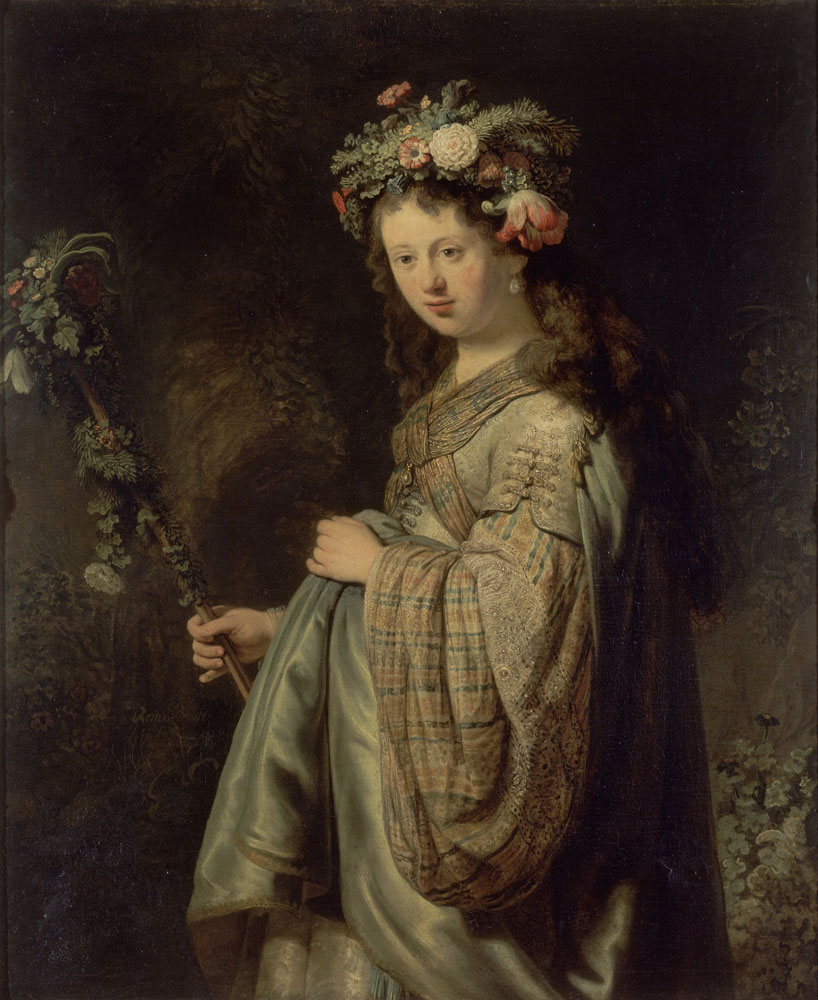Rembrandt van Rijn (Dutch, 1606–1669)
The Little Jewish Bride (Saskia as St. Catherine), 1638
Etching
Norton Simon Art Foundation, M.1977.32.031.G
Rembrandt’s wife, Saskia (1612–1642), was the likely model for this etching, which represents the Jewish queen Esther or perhaps Saint Catherine of Alexandria, whose attribute—a spiked wheel—is in the bottom right corner. The recurrence of Saskia’s features in Rembrandt’s work is often attributed to their almost mythologized love for one another. The two probably met through Saskia’s cousin, the painter and art dealer Hendrick van Uylenburgh (1584/9–c. 1660), and wed in 1634 near her hometown in Friesland. Despite any misgivings Saskia’s wealthy family may have had about the union, she remained close with her relatives, creating a social and professional network that sustained the couple throughout their marriage. Their enduring affection grounds Rembrandt’s images of Saskia as a radiant goddess, such as Flora (1634) (Figure 4), which he painted the same year they were married.

Figure 4: Rembrandt van Rijn (Dutch, 1606–1669), Flora, 1634, oil on canvas, 125 x 101 cm, The State Hermitage Museum, St. Petersburg
View ImageImage Credit: